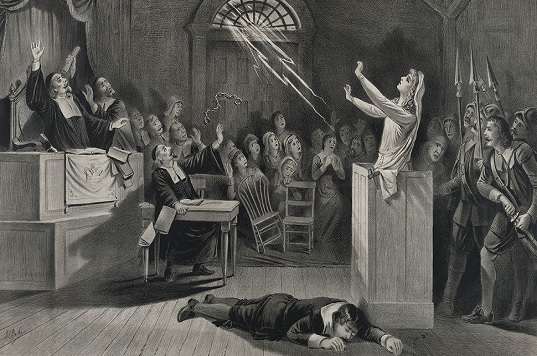List of 5 Possible Causes of the Salem Witch Trials

Boredom
One theory claims that it all started because the girls in the village were bored. Indeed, there wasn’t much to do. In addition, the Puritans held very strict beliefs which forbade many forms of entertainment not only for adults but for children too. And for girls, it was even worse because the restrictions for them were more severe than they were for boys. For them, reading books, and attending small circles involving fortune-telling and telling/listening to various stories - among others also about witches and witchcraft - were the main form of entertainment.
Strong Belief in the Occult
The Puritans strongly believed in the existence of witches and witchcraft. According to the belief, witches were in alliance with the devil that gave them the power to harm. They were blamed for all kinds of misfortunes from illnesses and failed crops to bad weather and other things that had a perfectly rational explanation even three centuries ago. But due to the strong belief in the occult, the villagers were inclined to the most improbable explanations. For them, witches and witchcraft were a very real threat.
Disputes, Rivalries, and Personal Differences
Many of those who were accused of witchcraft had unsettled accounts with their accusers or were seen as a threat to the Puritan values. About 50 people were directly or indirectly accused by the members of the Putnam family which strictly followed the Puritan beliefs and customs, and strongly supported Reverend Samuel Parris, the initiator of the witch hunt. Putnams’ rival family, the Porters tried to organize the villagers against the trials. But the attempt had failed and 19 of their supporters got accused of witchcraft.
Cold Weather Theory
According to this theory, the Salem tragedy might have been related to the cold weather, more specifically a pursuit for something or someone to blame for the related hardships such as crop failure. This theory is supported by historical records which indicate that the years preceding the Witch Trials were particularly cold. Also, the notorious witch hunt took place within the period of the so-called Great Witch Craze which in turn coincides with what is known as the Little Ice Age, a period of abnormally cold climate between the mid-14th and mid-19th centuries.
Ergot Poisoning
Consumption of rye grains contaminated with a fungus known as ergot is another possible explanation for the witch hysteria in late 17th century Salem. If eaten, the fungus can cause hallucinations and convulsions similar to those that were reported to be experienced by the allegedly bewitched girls. And according to Linnda Caporael, professor at the Rensselaer Polytechnic Institute who introduced the ergot poisoning theory, all the conditions were right for the ergot spread just before the Witch Trials.